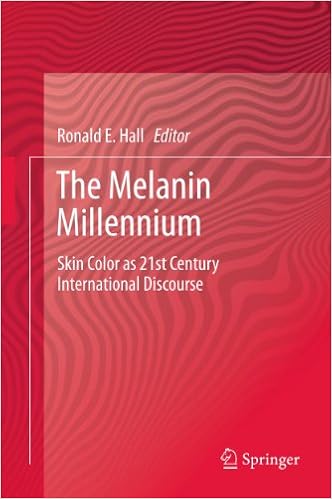The Melanin Millennium: Skin Color as 21st Century International Discourse
Springer
2013
348 pages
32 illustrations
Hardcover ISBN 978-94-007-4607-7
eBook ISBN: 978-94-007-4608-4
DOI: 10.1007/978-94-007-4608-4
Edited by:
Ronald E. Hall, Professor of Social Work
Michigan State University
- Addresses the issue of skin color in a worldwide context
- Discusses the introduction of new forms of visual media and their effect on skin color discrimination
- Touches up on the issue of skin bleaching and the Bleaching Syndrome
In the aftermath of the 60s “Black is Beautiful” movement and publication of The Color Complex almost thirty years later the issue of skin color has mushroomed onto the world stage of social science. Such visibility has inspired publication of the Melanin Millennium for insuring that the discourse on skin color meet the highest standards of accuracy and objective investigation.
This volume addresses the issue of skin color in a worldwide context. A virtual visit to countries that have witnessed a huge rise in the use of skin whitening products and facial feature surgeries aiming for a more Caucasian-like appearance will be taken into account. The book also addresses the question of whether using the laws has helped to redress injustices of skin color discrimination, or only further promoted recognition of its divisiveness among people of color and Whites.
The Melanin Millennium has to do with now and the future. In the 20th century science including eugenics was given to and dominated by discussions of race category. Heretofore there remain social scientists and other relative to the issue of skin color loyal to race discourse. However in their interpretation and analysis of social phenomena the world has moved on. Thus while race dominated the 20th century the 21st century will emerge as a global community dominated by skin color and making it the melanin millennium.
Contents
- Preface
- Chapter 1. The Bleaching Syndrome: Western Civilization vis-à-vis Inferiorized People of Color; Ronald E. Hall
- Chapter 2. The Historical and Cultural Influences of Skin Bleaching in Tanzania; Kelly M. Lewis, Solette Harris, Christina Champ, Willbrord Kalala, Will Jones, Kecia L. Ellick, Justie Huff and Sinead Younge
- Chapter 3. Pathophysiology and Psychopathology of Skin Bleaching and Implicationa of Skin Colour in Africa; A. A. Olowu and O. Ogunlade
- Chapter 4. An Introduction to Japanese Society’s Attitudes Toward Race and Skin Color; Arudou Debito
- Chapter 5. The Inconvenient Truth of India, Caste, and Color Discrimination; Varsha Ayyar and Lalit Khandare
- Chapter 6. Indigeneity on Guahan: Skin Color as a Measure of Decolonization; LisaLinda Natividad
- Chapter 7. A Table of Two Cultures; Eneid Routté-Gómez
- Chapter 8. Where are you From?; Stéphanie Cassilde
- Chapter 9. Social Work Futures: Reflections from the UK on the Demise of Anti-racist Social Work and Emerging Issues in a “Post-Race'” Era; Mekada J. Graham
- Chapter 10. Shades of Conciousness: From Jamaica to the UK; William Henry
- Chapter 11. Fanon Revisited: Race Gender and Colniality vis-à-vis Skin Color; Linda Lane and Hauwa Mahdi
- Chapter 12. Pigment Disorders and Pigment Manipulations; Henk E. Menke
- Chapter 13. Skin Color and Blood Quantum: Getting the Red Out; Deb Bakken and Karen Branden
- Chapter 14. The Impact of Skin Color on Mental and Behavorial Health in African American and Latina Adolescent Girls: A Review of the Literature; Alfiee M. Breland-Noble
- Chapter 15. Characteristics of Color Discrimination Charges Filed with the EEOC; Joni Hersch
- Chapter 16. The Consequences of Colorism; Margaret Hunter
- Chapter 17. Navigating the Color Complex: How Multiracial Individuals Narrate the Elements of Appearance and Dynamics of Color in Twenty-first Century America; Sara McDonough and David L. Brunsma
- Chapter 18. The Fade-Out of Shirley, a Once-Ultimate Norm: Colour Balance, Image Technologies, and Cognitive Equity; Lorna Roth
- Chapter 19. What Color is Red? Exploring the implications of Phenotype for Native Americans; Hilary N. Weaver
- Chapter 20. From Fair & Lovely to Banho de Lua: Skin Whitening and its Implications in the Multi-ethnic and Multicolored Surinamese Society; Jack Menke
- Chapter 21. Affirmative Action and Racial Identityin Brazil: A Study of the First Quota Graduates at the State University of Rio de Janneiro: Vânia Penha-Lopes
- Index


